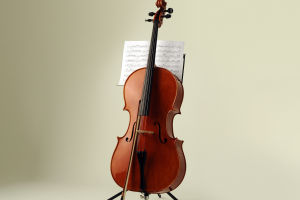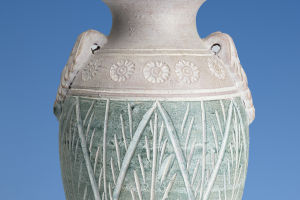Starting Your Cello Journey
Starting to learn the cello can feel like a thrilling adventure, but it can also be a little overwhelming.
With its beautiful, rich sound and deep history, the cello is an instrument that brings immense joy, but mastering it takes time and patience.
Whether you're an absolute beginner or have some musical background, this guide will walk you through everything you need to know to begin your cello journey with confidence.
Choosing the Right Cello
Before you start practicing, you need the right cello. As a beginner, you might be tempted to buy a fancy, high-end cello, but keep in mind that you don't need to break the bank just yet. Renting a cello is a great option for beginners, and most music stores offer rental programs. It's also essential to choose the right size. Full-size cellos are for adults, but if you're younger or have a smaller frame, you may need a ¾ or ½ size cello.
The right size will ensure that you're comfortable holding and playing the instrument. When renting or purchasing, make sure the cello is in good condition. You'll want a well-maintained bow and strings, as these will affect the sound and playability of the instrument. If possible, seek the advice of a professional before making your purchase.
Essential Cello Accessories
Once you have your cello, you'll need a few essential accessories to get started:
1. Cello Bow: This is your primary tool for producing sound. A bow is typically made from wood and horsehair, and you'll need to make sure it's properly tightened before playing.
2. Rosin: Rosin is applied to the bow hairs to help them grip the strings and produce sound. Without rosin, your bow will slide too easily and won't produce a clear note.
3. Cello Case: Protect your cello from damage by investing in a sturdy cello case. This is especially important if you plan to transport your instrument.
4. Endpin Anchor: The endpin holds the cello in place while you play. If you're playing on a slippery surface, an anchor or rug may help keep the cello from sliding around.
Learning Basic Cello Technique
Now that you have your cello and accessories, it's time to start learning. Here are some basic techniques to get you started.
1. Posture and Positioning: Proper posture is key to comfortable and effective cello playing. Sit up straight with your shoulders relaxed and your feet flat on the floor. The cello should be positioned so that it rests comfortably between your knees, with the endpin resting lightly on the floor. Your left hand will be on the fingerboard, and your right hand will hold the bow.
2. Bow Hold: The bow hold may seem tricky at first, but it's crucial to produce a good sound. Hold the bow with your thumb and middle finger in the middle of the frog (the part of the bow near the handle). Your index finger should rest gently on top, and your ring and pinky fingers should curl around the end of the bow.
3. Left-Hand Technique: Your left hand will press down on the fingerboard to change the pitch of the notes. Make sure your fingers are curved, and aim to use the pads of your fingers rather than the tips. Avoid pressing too hard; light pressure will create a clean, bright tone.
4. Bowing Technique: When playing, the bow should move parallel to the bridge of the cello. Use a smooth, even motion. The bow movement should be fluid and consistent across all strings
Practice Tips for Beginners
While cello can seem daunting at first, consistent practice will help you improve quickly. Here are a few practice tips to keep in mind:
1. Start Slowly: It's tempting to rush through scales or songs, but slow practice is the key to mastering the fundamentals. Focus on getting your technique right before speeding up.
2. Focus on Tone Quality: Always pay attention to the sound you're producing. A clean, even tone should be your goal, rather than just getting the notes right.
3. Use a Metronome: A metronome will help you stay on time, especially when practicing scales or more difficult pieces.
4. Break It Down: Practice short sections of a piece at a time rather than trying to play it all the way through. This allows you to focus on the tricky parts and master them before moving on.
Finding a Cello Teacher
Learning cello is much easier with the guidance of a teacher. A professional teacher will help you develop good habits from the start, guide you through difficult techniques, and ensure you're progressing at the right pace. Look for a teacher who has experience with beginners, and don't be afraid to ask questions! In addition to private lessons, there are also plenty of online resources, tutorials, and cello communities that can help. Some beginners find that using online platforms or watching instructional videos alongside in-person lessons is a helpful way to accelerate their learning.
Patience is Key
Learning the cello takes time, and progress may seem slow at first. Don't get discouraged—every musician has been there. The beauty of the cello is in its depth and expressiveness, and with consistent practice, you'll soon be playing with confidence and joy.
Remember, the journey of learning any instrument is just as important as the result. Stay motivated, keep practicing, and most importantly—enjoy making music!
1. Parts of the Cello
Video by Join the Orchestra


